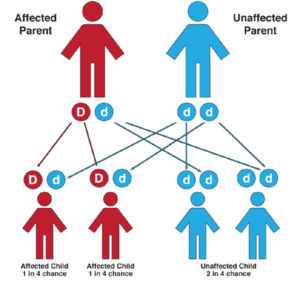Von Willebrand Disease: The 4 minute overview [with images]
Von Willebrand Disease (VWD) is a genetic disorder caused by missing or defective von Willebrand factor (VWF), a clotting protein. VWF binds factor VIII, a key clotting protein, and platelets in blood vessel walls, which help form a platelet plug during the clotting process. [1]
History of the disease
The first written piece describing this inherited bleeding disorder was published by a Finnish physician, Erik von Willebrand, in 1926. His studies began with an assessment of a family living on the island of Foglo in the Aland archipelago in the Baltic Sea. Eventually, the father and all four members of his family passed away as a result of the bleeding disorder.
In this initial study, Dr. Willebrand noted that the patients had a prolonged bleeding time despite having a normal platelet count, and exhibited an autosomal dominant mode of transmission of the bleeding problem. After this discovery the disorder was named after its discoverer, Dr. Willebrand.
During the 1950s and early 1960s, it was realized that this condition was also typically associated with a reduced level of factor VIII (FVIII) activity, and that this deficiency could be replaced through the infusion of plasma or plasma fractions. In 1971 a significant advancement was made by two groups of investigators who showed, for the first time using immunologic assays, that FVIII and von Willebrand factor were distinct proteins.
The distinct nature of VWF was demonstrated by the characterization of the VWF gene in 1985 by four independent groups of investigators. This discovery led to an improved understanding of the genetic basis of VWD. Additionally, this led to new possibilities for approaching the condition. [2]

Genetics – male or female?
The gene for von Willebrand factor is on one of the autosomes, chromosome 12. Since it is not on the sex chromosome, it occurs equally in men and women. [3] If only one parent has a dominant inheritance type of VWD, with each birth there is:
- a 50% chance of having a child (boy or girl) who inherits the VWD mutation
- a 50% chance of having a child (boy or girl) who does not inherit the VWD mutation

3 Types
-
Type 1 VWD is found in 60%-80% of patients.
This is the most common form of VWD. [2] People with type 1 VWD have a quantitative deficiency of VWF. Levels of VWF in the blood range from 20%-50% of normal. The symptoms are usually mild. [1] -
Type 2 VWD is found in 15%-30% of patients.
People with type 2 VWD have a qualitative deficiency in their VWF. Type 2 is broken down into four subtypes: type 2A, type 2B, type 2M and type 2N, depending on the presence and behavior of multimers, molecular chains of VWF. Symptoms are mild to moderate. [1] The clinical manifestations of the type 2 variants of VWD are similar to those of type 1 disease. [2] -
Type 3 WVD is found in 5%-10% of patients.
People with type 3 VWD have quantitative deficiency of VWF. Symptoms are typically severe, and include spontaneous bleeding episodes, often into their joints and muscles. [1] In type 3, VWF levels are always less than 0.05 U/mL and are often undetectable. [2]
George King Laboratory results for VWD 1, 2 & 3
The following test results are provided on von Willebrand plasma:
- VWF Antigen
- VWF Activity
- Factor VIII Activity
See George King Bio-Medical von Willebrand products here.
Note: We offer VWD plasmas for all three types. Assay sheets available upon request.
